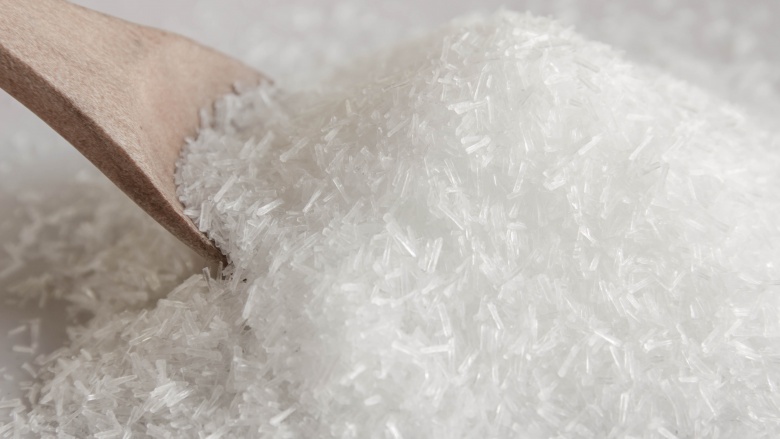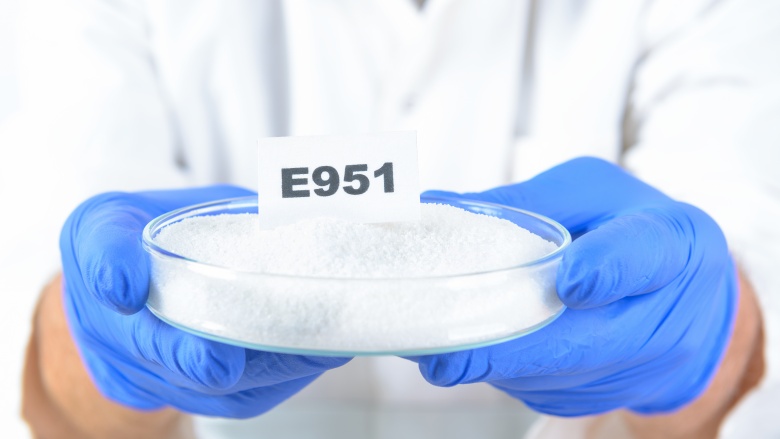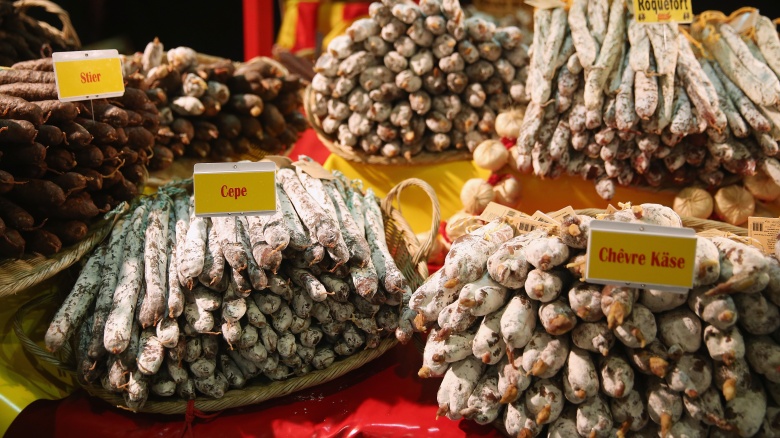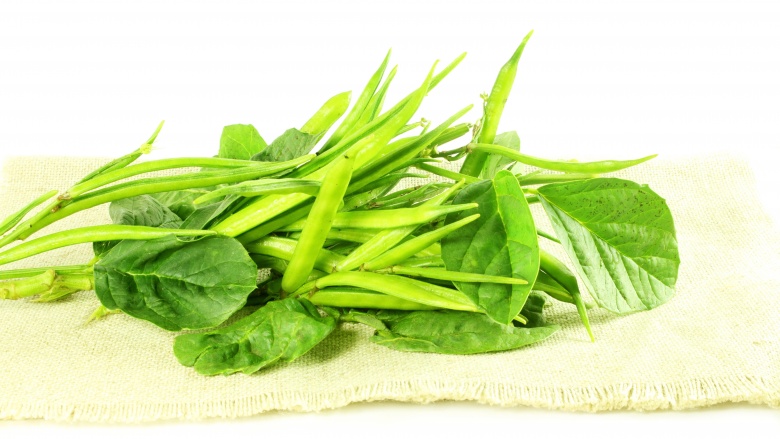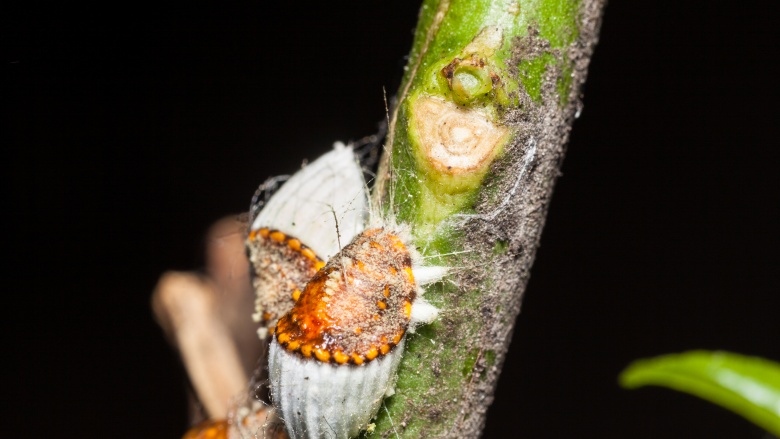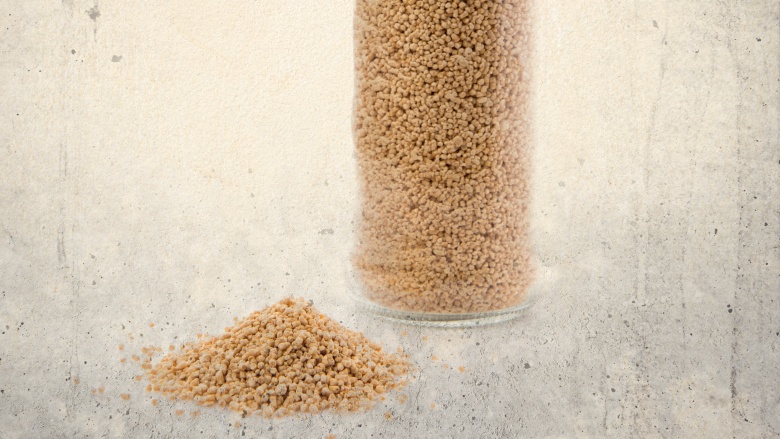What You Should Know About Common Food Additives
Additives. Check out the nutritional labels on almost anything you pick up at the grocery store and you'll find some ingredients that are as impossible to spell as they are to say. If you're worried about just what it is you're eating, you're not alone. An increasingly health-conscious world is getting more and more curious about just what's being included in their foods, so let's cut through some of the hype, the complicated names and confusing science to take a look at some of the most common food additives and what they mean for you.
Cellulose
Every so often, mainstream media seizes on this one for some headline sensationalism. You've probably seen them making the rounds on social media, claiming that unscrupulous companies have been adding wood pulp to your food and then charging you for it. Outrageous, right?
Not entirely. Cellulose is basically a compound that's found in plant cells, and, to quote something you probably heard in biology class, it's one of the building blocks of life — it comes from any kind of plant material. Admittedly, claiming you're eating wood pulp certainly gets your attention, but what they're less likely to tell you is it's not a bad thing (and it's probably not even from wood pulp).
It's not new, either. The FDA approved it back in 1973 as one of the GRAS food additives, or Generally Recognized as Safe. Their official report states that cellulose isn't absorbed by the human body and it doesn't undergo any changes as it passes through a person's digestive system.
So why use it? Some reasons are legit. It's an incredibly dry substance, and that means that it can absorb moisture in some foods that might otherwise have a slimy and pretty disgusting texture, like pectin, and in foods that have a tendency to clump together, like shredded cheese. In these products, it also helps prolong shelf life by getting rid of that extra moisture. Since it changes the texture of things, it can be added to certain low-fat products to keep it feeling like a full-fat food when you eat it.
Other reasons aren't so legit, and here's where the outrage comes in. Some manufacturers add cellulose to an expensive product (Parmesan cheese is the biggest offender here) in an attempt to stretch the product and log more on the profit side. Then, you have every right to be angry when you hear you're eating a healthy portion of cellulose.
BHA and BHT
BHA stands for butylated hydroxyanisole, and BHT is the equally confounding butylated hydroxytoluene. These two have been deemed safe by the FDA, but there's a bit of a caveat. That safety is dependent on a low dosage. High dosages have been linked to an increased risk of cancer in animals, and that's led some organizations (like the National Institutes of Health) to call them a carcinogen. What does that all mean?
First, a bit about what it is. The additive is an antioxidant, and it's used to keep foods that are generally stored at room temperature from undergoing the same process that causes some metals to rust. In the case of food, it's fat that undergoes the transformation and reacts with oxygen to break down and turn rancid. BHA helps slow the process, and it's used to help room temperature food last longer. It's still a popular additive in spite of the controversy, in part because of the wide temperature range it's still effective at. (Vitamin E has all the same properties as BHA and BHT, but only works at a lower temperature.)
Are they dangerous? No one really seems to know. According to the University of California Berkeley, most of the foods that contain BHA and BHT should be eaten in moderation for other reasons. They're things like potato chips, cereals, snacks and other highly processed foods. Don't need too much of that stuff anyway, right?
MSG
This one's probably the elephant in the room, and the mere mention of it is enough to make some people shy away with a vague sort of discomfort they might not even understand. First, let's talk about what it is. MSG (or monosodium glutamate), is part sodium, part glutamate. Glutamate is a natural substance that's found in a wide range of foods, like tomatoes. MSG came about in 1908, when a Japanese professor was experimenting with a traditional sort of seaweed broth. He developed a procedure for removing the glutamate, and found that was the compound that gave the broth the distinctive, savory flavor it was known for, called "umami". He added sodium to his glutamate, (which turned the substance into a powdered additive) and patented MSG.
Today, most MSG isn't made from seaweed. Most commercially produced MSG comes from a fermentation process that's similar to what makes yogurt and vinegar, and most companies use sugar beets, molasses, or sugar cane as their base. In Japan, there's even a popular seasoning that uses MSG as a main ingredient, but in the Western world it's been demonized as the source of headaches and muscle aches.
That all started with a single letter to the New England Journal of Medicine, written by Dr. Ho Man Kwok pondering why he always felt ill after eating at Chinese restaurants. He suggested both soy sauce and MSG as possible culprits, and science (and the public) ran with it. In the testing that followed, mostly in the 1990s, research found that even people who claimed a sensitivity to MSG didn't show any consistent signs of reacting to the presence of the additive in their food. Earlier tests that suggested there was something up simply revealed that baby mice are sensitive to it (adults aren't), and the FDA has ruled that it's GRAS, with the occasional exception of particularly sensitive individuals.
Aspartame
This one's how manufacturers keep sugar-free things tasting sweet. Aspartame is about 200 times more sweet than sugar, and while that means less can be used to get the same flavor, it's also been the subject of a huge amount of suspicion. It's claimed that aspartame is a carcinogen, based on studies that started with the substance's rise in popularity. That was back in the 1980s, when a study claimed that people who ate high levels of the sweetener were at higher risk for developing brain tumors. According to the National Cancer Institute, the correlation was accidental and the rise in tumors had begun a decade before anyone even thought of using aspartame. Further testing has found no correlation between the sweetener and health problems, and it's been approved as safe by the FDA and the European Food Safety Authority.
There might be another catch with aspartame, though, one that was only uncovered by a team from the Massachusetts General Hospital in 2016. You've probably heard that diet soda isn't all it's cracked up to be, and they've found there's a reason for that. When the team looked at the way aspartame acts in the gut, they found that it blocks a protein called intestinal alkaline phosphatase, or IAP. IAP helps the body regulate metabolism and, in turn, it helps you burn fat. Aspartame interferes with the small intestine's production of the enzyme, which goes a long way in explaining why swapping your Coke for a Diet Coke isn't going to help your diet in the least.
Xanthan gum
This one's pretty disgusting, but it's as natural as natural can get. Ever forget you bought a head of cauliflower or broccoli, and left it sitting for a few months? That black stuff it turns into is xanthan gum.
Really. Those vegetables (and others) are susceptible to a bacteria called Xanthomonas campestris, which is what causes the process that makes that black goop. In commercial settings, veggies are left to ferment in vats until there's nothing left of them but that goop, which is then heated to kill the bacteria and purified to create xanthan gum. The whole thing was the product of the 1950s, when the U.S. Department of Agriculture discovered the process and the uses for the finished product. When it's included in your food, it acts as a stabilizing agent that does everything from keeping your ice cream creamy to keeping your barbecue sauces from splitting. It's a favorite in the world of molecular gastronomy, and with the rise of trendy gluten-free diets, it's now often added to baked goods to mimic the texture of gluten-based breads and cakes. Even though other uses for xanthan gum include things like stabilizing wallpaper glue, paint pigments and the flow of oil through drilling rigs, it's always been considered safe to eat and completely harmless.
Sodium nitrate and sodium nitrite
Sodium nitrate and sodium nitrite are two sides to the same coin. For years, they've been instrumental in the preservation and curing of meats, but it's only more recently that we've started to figure out the science behind what's going on. Sodium nitrate is a naturally occurring form of salt, and that's the stuff that's used to make all your favorite cured meats. About a hundred-odd years ago, we figured out that once it was added to the meat, the sodium nitrate turned into sodium nitrite. Today some producers just use sodium — which is what some producers use alone today. It wasn't until the 1970s that it was found that when nitrites were heated to a temperature above 266 degrees Fahrenheit, they turned carcinogenic.
It's not that straightforward, though. Nitrites aren't just in that Slim Jim you can't resist at the grocery store check-out. They're in vegetables, too — that's where most of your daily dose of nitrites comes from. Most veggies are grown with nitrogen-based fertilizers, which are then absorbed by the plant and converted to nitrites when you eat them. More research found they're pretty essential for the body, which stores them as nitric oxide then uses that particular compound to help keep our circulatory systems functioning.
So what does that all mean for the nitrites found in cured meats? You've undoubtedly heard about how bad they are, but those particular nitrites only make up a minuscule percentage of your daily intake. While there have been links found between nitrites and cancer, that requires such a mind-numbingly high consumption of nitrites that if that's what your diet looks like, you've got a whole bunch of other problems. Some don't even consider nitrites a carcinogen, and call them a nutrient instead.
Guar gum
Guar gum comes from the guar bean, a legume grown and harvested mainly in India. Once it's harvested, the seeds are husked and ground into a fine powder, creating guar gum. Today, it's exported in huge numbers and it's been used in processed foods since the 1950s, when it was found to be particularly effective in preserving the creamy texture of things like ice cream. Unlike countless other food additives, this one has been touted for its nutritional benefits.
It's a soluble fiber, and that means that it helps the body get rid of bad cholesterol. It also acts as a sort of natural laxative, and it works so well that it's often prescribed for people suffering from things like IBS and Crohn's disease. It helps regulate glucose levels, get rid of bad fats, and in turn, it's been linked to managing weight loss and fighting obesity. (Guar gum weight loss pills were briefly marketed, but they were banned when it was found that too much guar could back up the digestive system.) All in all, it's not a bad deal, and the fact that it comes in ice cream? Bonus!
Unfortunately, guar gum's properties have other applications, too, and that's been driving up the price. It's used in fracking operations, as it's been found to help make the entire operation more efficient by thickening water to move sand faster. That's great for guar bean farmers, but worse for those that have been using it as an integral part of the production of foods and medicines.
Natural Red 4
There are a ton of food dyes approved by the FDA, but Natural Red 4 seems to be the one that makes most people sit up and take notice. That's largely because of the hype that's claimed that if you eat anything that's been colored with this particular additive, you're eating bugs. That's... semi-true, but not entirely true.
Natural Red 4 (or carmine) is manufactured by crushing of the scales of the female insect called the cochineal scale. The scales are crushed and the dye is extracted from the juice, and while that sounds pretty gross, there are generally no wings or bug bits involved in the process. The pigment itself is pretty neat, and the bugs evolved to produce the dye as a sort of chemical weapon against potential ant predators. The human world has known about its uses for hundreds of years, and Europe was introduced to it when explorers discovered what it was the Aztecs were using to dye their ceremonial garb such a bright, long-lasting red. The food industry is still using it. And in case you were wondering, it takes about 70,000 bugs to make a single pound of dye.
For a long time, it was covered under the description of "natural color," until that all changed in 2009. The change wasn't for the reason you'd think, and it wasn't because there was suddenly something wrong with using bug juice to color your yogurt. After some people developed an allergic reaction to the color, it was decided that manufacturers who used the dye needed to disclose it on packaging.
Soy lecithin
Soy lecithin shows up in a lot of products, from chocolate to buttery spreads and dressings. While you're probably familiar with the saying that oil and water don't mix, they actually can. It's emulsifiers like soy lecithin that allow it to happen.
It's popular (and versatile) because not only does it aid in the process of mixing fatty, oily substances with water, but it's a highly stable compound that keeps those mixtures lasting for a long time. That means you can keep your chocolate bar stored safely away on a top shelf in the kitchen cabinet for an emergency, and when that day comes that you just need that extra shot of comfort chocolate, it's going to be there and it's going look the same as it did the day it was made.
It's also a wetting agent (which makes things like batters and mixes easier to stir), a releasing agent (which makes things like bread come out of the pans easier), and an anti-foaming agent (or a foaming agent, when it's used with a no-fat substance). A miracle additive, right? Unfortunately there is at least one potential down side to this one. Since it's made from soy, even the most minute traces of soy can remain in the final product. That makes it a potential allergen, and even though it's in such a small quantity it's still safe for most of those who might be allergic to soy, manufacturers are still required to list it on an ingredient panel.
Fluoride
But, you might be saying, isn't fluoride added to water? The truth is? It's complicated.
According to the Centers for Disease Control and Prevention, there are three different additives used across the U.S. Fluorosilicic acid, sodium fluoride, and sodium fluorosilicate are all used to add fluoride to the country's drinking water. It's all regulated by a surprising number of government agencies, including the FDA and the EPA. That being said, food prepared with fluoride-enhanced water will also have fluoride additives present, and according to the American Journal of Clinical Nutrition, that means it's in pretty much everything you eat. Actual amounts are impossible to determine, they say, but it's in everything from fruit juice and carbonated sodas to fish, fruits and vegetables, and cookies. According to the University of Maryland Medical Center, it is possible (but rare) that a person gets more than their needed dose of fluoride. In most cases, that's something that only happens to young children and, in that case, they note that the development of their tooth enamel might be impacted. For most of us, though, fluoride is a necessary additive that helps keep our teeth healthy and cavity-free.
In fact, the recommended daily allowance of fluoride was adjusted in 2015, from between 0.7 milligrams and 1.2 milligrams to simply 0.7 milligrams. That's because it's found in more sources than it was when fluoride programs originally started, and they haven't become any less controversial.



